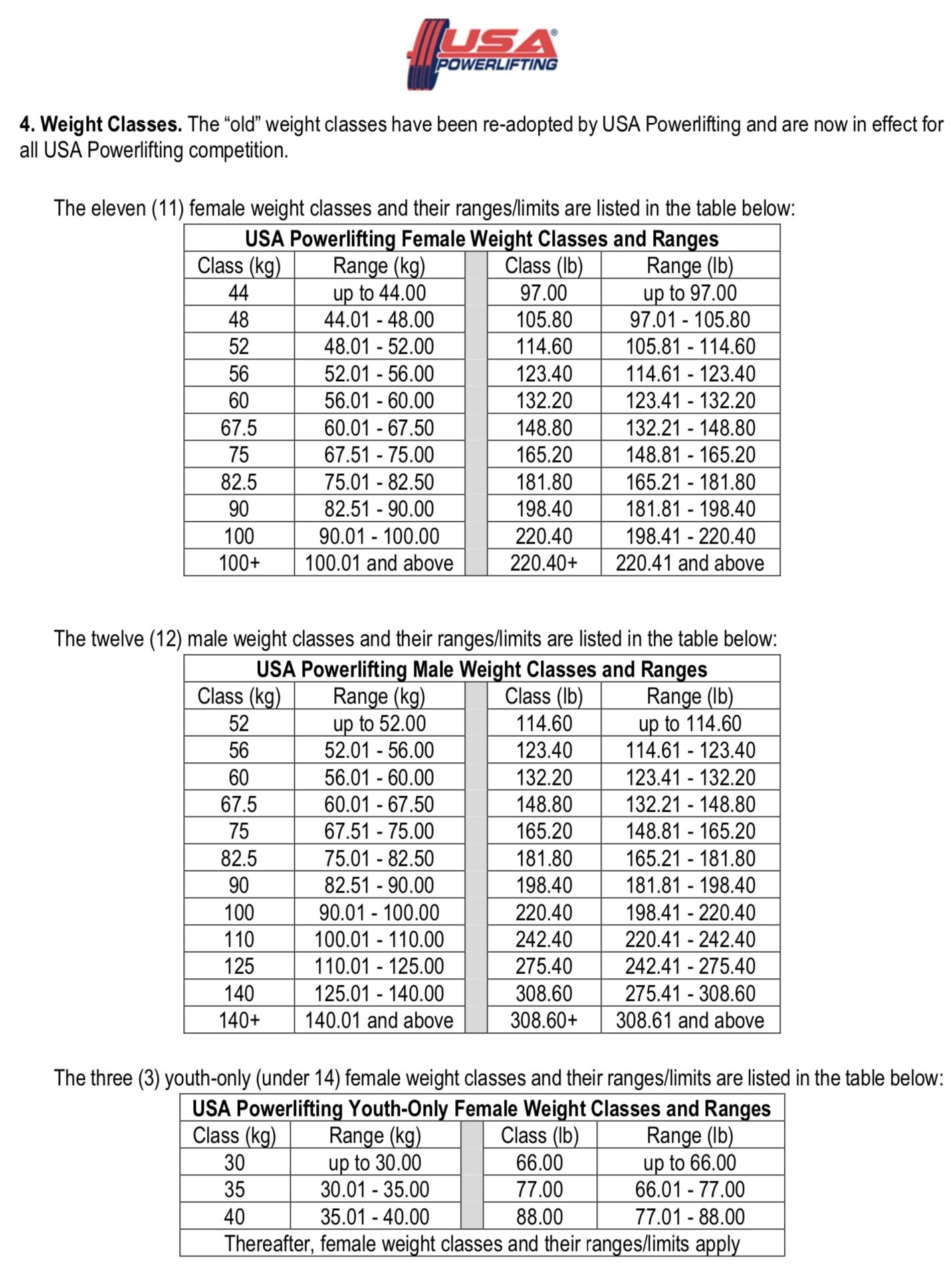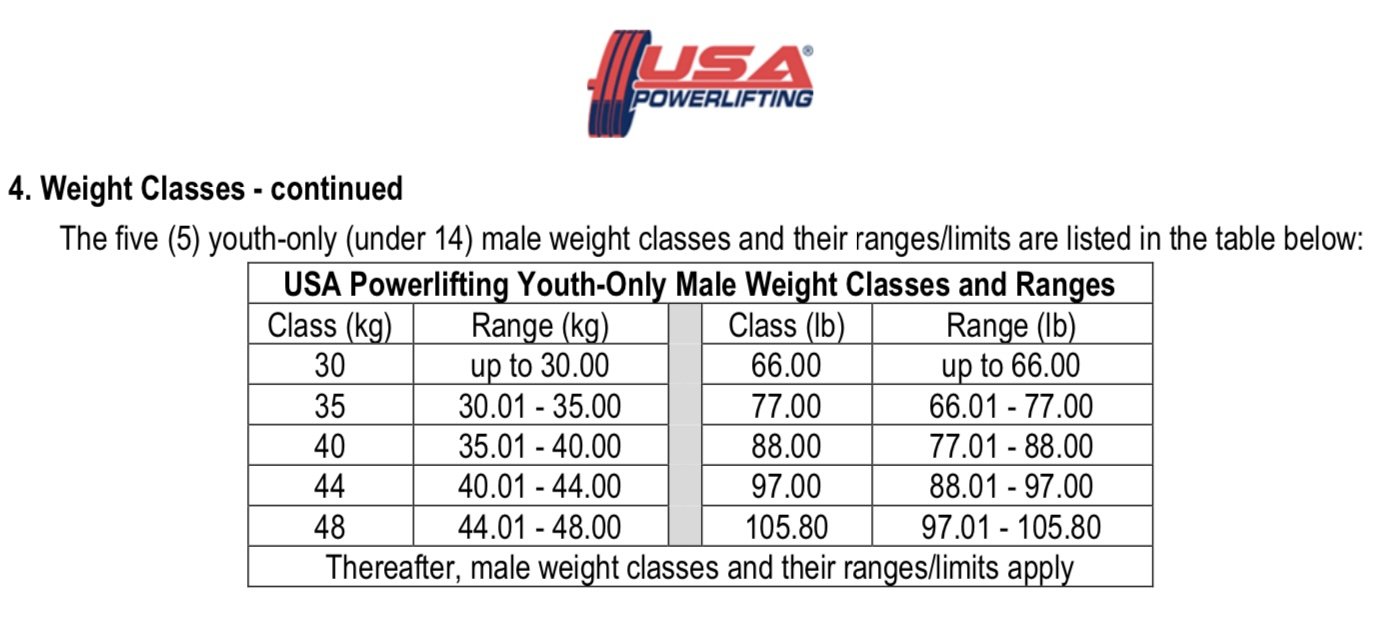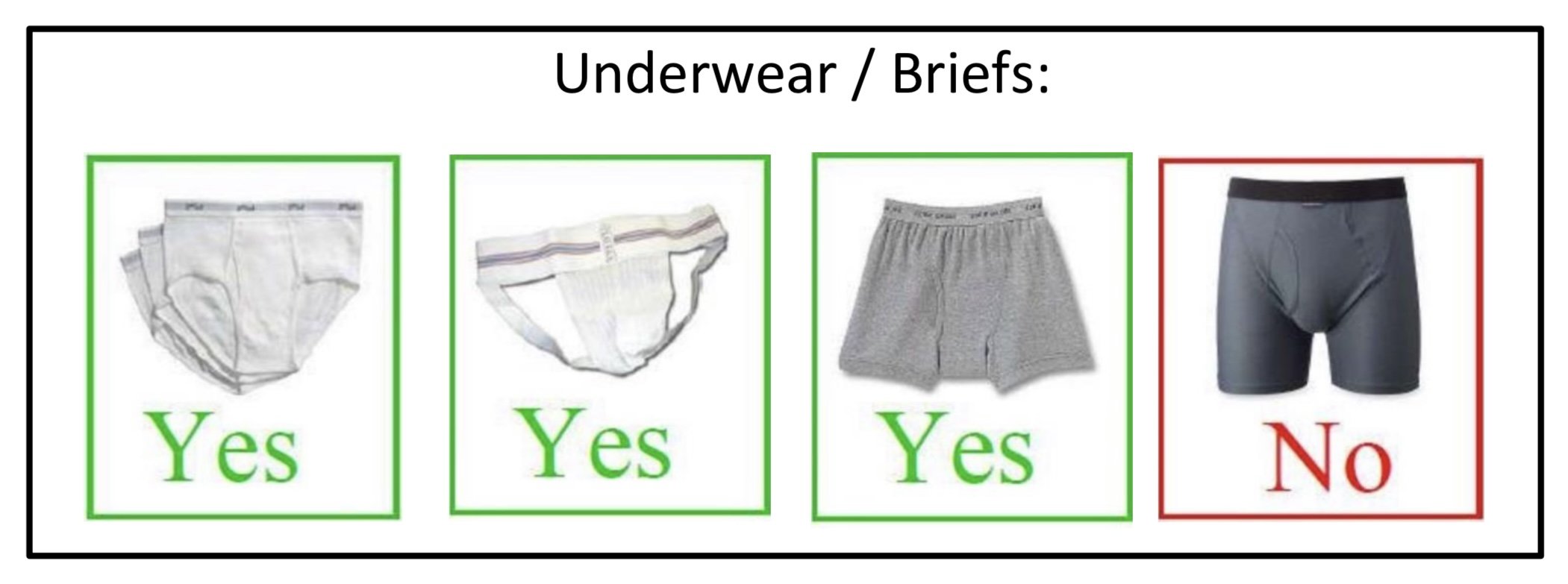Let’s Talk USA Powerlifting Rules
First off, good luck on your upcoming competition! If you’re not competing, thanks for giving this a look - hopefully it demystifies the rules a little bit.
The key changes to the USA Powerlifting rules you need to know are those we mentioned in our last entry, the changes to the belt and the head position.
Since those changes in June, no further updates have been made to the rulebook - but a complete rewrite is expected, so keep your eyes open for our thoughts when that happens.
For now though, let’s run through the basic items you’ll need to know for the day of the competition.
You’ll show up and set your rack heights and weigh in 2 hours prior to the beginning of your lifting session. AM session lifters will begin weigh-ins at 7am, PM session lifters will begin weigh-ins at Noon. Weigh-ins will be conducted by a member of your same sex, in a private area.
Each competitor will have a lot number; this dictates the order of your weigh-in, and is based on the lifting order in competition. In case you haven’t seen it already, the new weight classes are set out here:
Equipment:
At weigh ins you’ll have your equipment inspected by a referee, and will also submit your opening attempts for all three disciplines.
You’ll need a singlet:
A t-shirt to wear underneath your singlet for the Squat and Bench press (you may remove your t-shirt for the deadlift). The shirt must be fabric, one layer, must have no rubberized material, and cannot have any reinforced seams, pockets, buttons, zippers. It must be a crew neck (no v-necks, peeps - save those for going out)
Wrist wraps - Like knee sleeves below, as these are supportive structures they are subject to an approved manufacturer list, which you can find here:
Wrist wraps cannot extend beyond 10cm above and 2cm below the wrist joint, and must be 8cm or less at their widest point. Wraps also cannot be longer than 1 meter. Your wraps CAN include loops, but those loops must come off your thumb before you lift. If we see it, we’ll say something. If, by chance, you successfully complete your lift and we have NOT noticed you have your thumb loops affixed, this is not cause to red-light the lift, but we will warn you to remove them prior to subsequent attempts.
Belt - one of the recent major changes, nearly all requirements for the belt have been eliminated. The sole remaining rule is that the belt must be no wider that 10cm at it’s widest point, not including the buckle. Bear in mind if your belt is obviously dangerous to others or has anything obscene written or affixed to it, you can’t wear it - use reasonable judgement.
Approved underwear - This is a source of much ire in the community; for now the USA Powerlifting rules remain the same: the underwear must either be briefs, a jockstrap, or boxer shorts with NO LEGS (the latter being fairly new). Here’s an example:
Knee sleeves - You can use only single (1) layer knee sleeves, made of neoprene, though if there is a non-supportive layer of fabric over the neoprene, this is also acceptable. There is a list of approved manufacturers for these here (same link as above):
These must ONLY be worn on the knees, and cannot be in contact with your singlet or socks.
Socks - you MAY wear socks for the squat and bench press - they are not required. They cannot have rubber on the bottom of the sock, and they cannot come into contact with your knee sleeves.
For the deadlift, you MUST wear socks that are full shin-length. Don’t have some? Get some.
Shoes - any lifting shoe, wrestling boot, athletic shoe (with no cleats), deadlift slipper, or other flat shoe is allowable. Hiking boots, work boots, or any shoe with a sole thicker than 5cm is a no-go. Additionally, shoes with individual toes are specifically banned - your vibram fivefingers are not welcome here.
In addition to the above, you can wear two layers of medical tape around your thumbs - but nowhere else. If you have an injury that requires medical tape, the application of that tape will need to be approved at equipment check.
Performance:
You’ve got your equipment checked, you’re all weighed in, and you’re ready to go - next is the rules briefing. We’ll have a short 5-10 minute huddle where we review the basic rules of competition, discussing commands, code of conduct, etc. about 30 minutes before lifting begins. This is mandatory for all lifters.
After this you’ll be free to continue or begin your warm-up headed into the lifting session.
Each discipline has it’s own commands, but the surrounding structure is the same.
Once the bar is loaded to your designated weight, the head judge will call out “bar is loaded”; this may or may not be repeated by the announcer - be sure that as your place in the roster approaches, you’re paying attention. In our case, the scoreboard will be projected, so it will be easy to find your place. The announcer will also frequently state the upcoming lifting order, the next lifters, in order stated as “On Deck”, “In the hole”, and “three out”.
Once the head judge states “bar is loaded”, you will have one minute to begin the lift, and following the commencement of the lift, one minute to complete it. Once you perform your attempt, you have thirty seconds to leave the platform, and one full minute from the time you leave the platform to submit your next attempt weight at the scoring table.
Your attempts must be in 2.5kg increments, and once you’ve set your attempts with the scoring table, you won’t be able to change them. If you don’t give another attempt, the default will be to use the same weight for your next attempt if you missed, or a 2.5kg increase if you succeeded.
The only exception to this rule is the third attempt of the deadlift. You’re allowed two (2) changes to this, up or down, BEFORE the bar is loaded for your third attempt. Unless you’re jockeying for position with another lifter, no need to mess with this.
Between each discipline there will be a break of no less than ten minutes.
As for each individual discipline, we first have the Squat, then the Bench Press, and finally the Deadlift.
For the Squat, you’ll remove the bar from the rack with or without the assistance of the spotters, step back, and await the “Squat” command, accompanied by the lowering of the head judge’s arm. Squat down until your leg at the hip joint is lower than the top of your knee, then stand upright again. Once you have returned to a standing position, you’ll receive the “Rack” command, accompanied by a physical backward motion of the head judge’s arm. WAIT FOR THE RACK COMMAND.
We hate giving red lights for this, but them’s the rules, kid.
For the bench press, you’ll remove the bar from the rack or receive a handoff from a designated spotter.
That’s right, neither your coach, your brother, nor your mother-in-law will be doing your handoff, our spotter will. Let them know what you prefer before you lay down.
Once you have the bar unpacked and in the starting position:
- Feet flat on the ground
- Shoulders and butt in contact with the bench
- Your head can be up or down (this is major change #2)
You’ll receive the “Start” command, once again accompanied by a downward movement of the judge’s arm. Once the bar is lowered to your chest, under control, and motionless, you will receive the “Press” command from the head judge, along with it’s partner in crime, an upwards arm movement. Once you’ve pressed the bar up and locked your elbows, with the bar motionless and under control, you’ll receive the “Rack” command, accompanied by, you guessed it, another arm motion backwards.
Remember, If you raise your shoulders or glutes from the bench, it’s a missed lift, but your head can be on or off the bench at any time during the lift.
This too bears repeating: WAIT FOR THE RACK COMMAND.
Lastly, we have the deadlift.
The deadlift is the simplest in terms of commands. “Bar is Loaded” serves as your start command, and the only command you’ll receive is “Down”, accompanied by the head judge’s arm moving in a downward motion. Be sure to lower the bar under control, don’t drop it, as this will disqualify you. You don’t need to lower it slowly, just in your own two hands.
Lastly, let’s talk drug testing. We are required to test 10% of our athletes at each meet, rounded up. If we had 60 lifters, that’s 6 tests, if 63, that’s 7 tests.
These are chosen primarily at random, though we do have discretion to choose specific lifters. If you are selected for drug testing, you’ll meet with a referee to collect a urine sample after lifting ends, and before awards are given.
There you have it! Keep these things in mind - if you have any questions, be sure to ask them at the rules briefing before lifting begins.
We look forward to seeing you on the platform.





